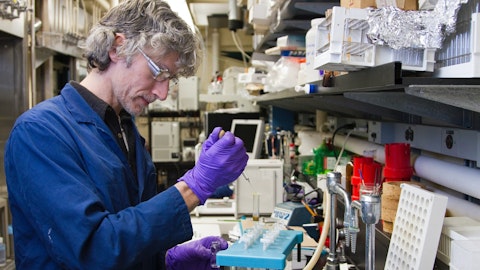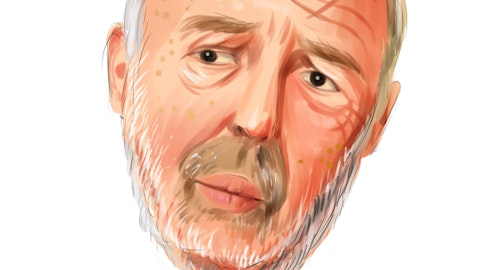Jan D’Alvise: Sure, Yeah. So we have disclosed that we would expect that the GTX-104 study will start as planned in the first half of next year, actually in the second quarter, we would expect to see the first patient in. That study is expected to enroll about 100 patients. We’ll have two arms. It’ll — 50 of those patients will be on the oral nimodipine and 50, roughly 50 on our IV GTX-104. We expect it will take about a year to enroll those patients and with a short follow-up period, the whole study is expected to take about 18 months. So we would expect to wrap up this study if we were able to start mid next year, we’d expect to wrap up the study towards the end of 2024 and then file in early €˜25. And again, we hope we’ll get fast track review on this, but assuming a 10 months review cycle, which would be the conservative, we would expect to have approval before the end of 2025.
And I’ll turn it over to Brian with regards to your balance sheet question. Brian, do you want to take that one?
Brian Ford: Sure. I’m not exactly certain what you meant by the balance sheet for capital requirements. You’re just looking for how much is going to be required to complete these programs?
Sahil Kazmi: Yes. So more just understanding how we can think about the burn going forward at this 5 million number that we’re seeing this quarter as some of the studies get into these larger safety studies. Should we expect sort of along the same trajectory?
Brian Ford: Yeah. Okay. So my expectation and our expectation, this is our long run burn rate is about $2 million a month. That’s kind of — you can take that from looking at our $35 million, it allows us for the next 18 months through March of €˜24. Beyond that, as we start to commercialize, I would expect our burn rate to increase a little bit just to cover the cost of commercialization and the build out of our commercial infrastructure. But at the same time, we’ll be looking at other ways to monetize and raise funds to support that commercialization effort.
Sahil Kazmi: Excellent. And then maybe one more for Jan or Prashant, if he’s on the call as well. Could you remind us some of the market research that’s been generated from the 101 program?
Jan D’Alvise: Sure. Yes. Maybe I’ll turn that over to Prashant. You want to cover that one?
Prashant Kohli: Yeah. Happy to. Hi, Sahil. So earlier this year, we refreshed our market assessment primary research for GTX-101. This is for Postherpetic Neuralgia. And the results, the findings were astounding to put it mildly, I guess. We interviewed over 250 primary care physicians and pain specialists specifically socialize the target product profile for GTX-101 and it was an overwhelming response even in light of — the lidocaine patches as you know is mostly the standard of care with the gabapentin and as Jan had mentioned both of them have unmet needs out there, which came out very clearly in the survey findings of these physicians. The perception was GTX-101 would meet a need out there in terms of faster analgesia as well as a potential drug that would be more convenient to use and apply.
So it validated our hypothesis that there is unmet need for PHN out there that GTX-101 would fulfill very nicely. The other aspect of our primary research was to look at reimbursement and what the impact of Shingrix vaccine is on the overall lidocaine patch market. And just to remind everyone that lidocaine patches have the only approved indication is for Postherpetic Neuralgia and what we found was only a 10 of scripts are being written for the patches, majority of the others are for back pain, osteoarthritis, diabetic peripheral neuropathy. And in over half the instances, the major insurance companies are routinely approving those prescriptions for the non-PHN pain indications. So the market opportunity we think for GTX-101 is very attractive with PHN as well as beyond for extension opportunities.





